Shazia Sadiq
When Graph Contrastive Learning Backfires: Spectral Vulnerability and Defense in Recommendation
Jul 10, 2025Abstract:Graph Contrastive Learning (GCL) has demonstrated substantial promise in enhancing the robustness and generalization of recommender systems, particularly by enabling models to leverage large-scale unlabeled data for improved representation learning. However, in this paper, we reveal an unexpected vulnerability: the integration of GCL inadvertently increases the susceptibility of a recommender to targeted promotion attacks. Through both theoretical investigation and empirical validation, we identify the root cause as the spectral smoothing effect induced by contrastive optimization, which disperses item embeddings across the representation space and unintentionally enhances the exposure of target items. Building on this insight, we introduce CLeaR, a bi-level optimization attack method that deliberately amplifies spectral smoothness, enabling a systematic investigation of the susceptibility of GCL-based recommendation models to targeted promotion attacks. Our findings highlight the urgent need for robust countermeasures; in response, we further propose SIM, a spectral irregularity mitigation framework designed to accurately detect and suppress targeted items without compromising model performance. Extensive experiments on multiple benchmark datasets demonstrate that, compared to existing targeted promotion attacks, GCL-based recommendation models exhibit greater susceptibility when evaluated with CLeaR, while SIM effectively mitigates these vulnerabilities.
Are Synthetic Videos Useful? A Benchmark for Retrieval-Centric Evaluation of Synthetic Videos
Jul 03, 2025Abstract:Text-to-video (T2V) synthesis has advanced rapidly, yet current evaluation metrics primarily capture visual quality and temporal consistency, offering limited insight into how synthetic videos perform in downstream tasks such as text-to-video retrieval (TVR). In this work, we introduce SynTVA, a new dataset and benchmark designed to evaluate the utility of synthetic videos for building retrieval models. Based on 800 diverse user queries derived from MSRVTT training split, we generate synthetic videos using state-of-the-art T2V models and annotate each video-text pair along four key semantic alignment dimensions: Object \& Scene, Action, Attribute, and Prompt Fidelity. Our evaluation framework correlates general video quality assessment (VQA) metrics with these alignment scores, and examines their predictive power for downstream TVR performance. To explore pathways of scaling up, we further develop an Auto-Evaluator to estimate alignment quality from existing metrics. Beyond benchmarking, our results show that SynTVA is a valuable asset for dataset augmentation, enabling the selection of high-utility synthetic samples that measurably improve TVR outcomes. Project page and dataset can be found at https://jasoncodemaker.github.io/SynTVA/.
How Do Experts Make Sense of Integrated Process Models?
May 28, 2025Abstract:A range of integrated modeling approaches have been developed to enable a holistic representation of business process logic together with all relevant business rules. These approaches address inherent problems with separate documentation of business process models and business rules. In this study, we explore how expert process workers make sense of the information provided through such integrated modeling approaches. To do so, we complement verbal protocol analysis with eye-tracking metrics to reveal nuanced user behaviours involved in the main phases of sensemaking, namely information foraging and information processing. By studying expert process workers engaged in tasks based on integrated modeling of business processes and rules, we provide insights that pave the way for a better understanding of sensemaking practices and improved development of business process and business rule integration approaches. Our research underscores the importance of offering personalized support mechanisms that increase the efficacy and efficiency of sensemaking practices for process knowledge workers.
Enhancing Treatment Effect Estimation via Active Learning: A Counterfactual Covering Perspective
May 08, 2025Abstract:Although numerous complex algorithms for treatment effect estimation have been developed in recent years, their effectiveness remains limited when handling insufficiently labeled training sets due to the high cost of labeling the effect after treatment, e.g., expensive tumor imaging or biopsy procedures needed to evaluate treatment effects. Therefore, it becomes essential to actively incorporate more high-quality labeled data, all while adhering to a constrained labeling budget. To enable data-efficient treatment effect estimation, we formalize the problem through rigorous theoretical analysis within the active learning context, where the derived key measures -- \textit{factual} and \textit{counterfactual covering radius} determine the risk upper bound. To reduce the bound, we propose a greedy radius reduction algorithm, which excels under an idealized, balanced data distribution. To generalize to more realistic data distributions, we further propose FCCM, which transforms the optimization objective into the \textit{Factual} and \textit{Counterfactual Coverage Maximization} to ensure effective radius reduction during data acquisition. Furthermore, benchmarking FCCM against other baselines demonstrates its superiority across both fully synthetic and semi-synthetic datasets.
LLM-based Semantic Augmentation for Harmful Content Detection
Apr 22, 2025Abstract:Recent advances in large language models (LLMs) have demonstrated strong performance on simple text classification tasks, frequently under zero-shot settings. However, their efficacy declines when tackling complex social media challenges such as propaganda detection, hateful meme classification, and toxicity identification. Much of the existing work has focused on using LLMs to generate synthetic training data, overlooking the potential of LLM-based text preprocessing and semantic augmentation. In this paper, we introduce an approach that prompts LLMs to clean noisy text and provide context-rich explanations, thereby enhancing training sets without substantial increases in data volume. We systematically evaluate on the SemEval 2024 multi-label Persuasive Meme dataset and further validate on the Google Jigsaw toxic comments and Facebook hateful memes datasets to assess generalizability. Our results reveal that zero-shot LLM classification underperforms on these high-context tasks compared to supervised models. In contrast, integrating LLM-based semantic augmentation yields performance on par with approaches that rely on human-annotated data, at a fraction of the cost. These findings underscore the importance of strategically incorporating LLMs into machine learning (ML) pipeline for social media classification tasks, offering broad implications for combating harmful content online.
RuleAgent: Discovering Rules for Recommendation Denoising with Autonomous Language Agents
Mar 30, 2025Abstract:The implicit feedback (e.g., clicks) in real-world recommender systems is often prone to severe noise caused by unintentional interactions, such as misclicks or curiosity-driven behavior. A common approach to denoising this feedback is manually crafting rules based on observations of training loss patterns. However, this approach is labor-intensive and the resulting rules often lack generalization across diverse scenarios. To overcome these limitations, we introduce RuleAgent, a language agent based framework which mimics real-world data experts to autonomously discover rules for recommendation denoising. Unlike the high-cost process of manual rule mining, RuleAgent offers rapid and dynamic rule discovery, ensuring adaptability to evolving data and varying scenarios. To achieve this, RuleAgent is equipped with tailored profile, memory, planning, and action modules and leverages reflection mechanisms to enhance its reasoning capabilities for rule discovery. Furthermore, to avoid the frequent retraining in rule discovery, we propose LossEraser-an unlearning strategy that streamlines training without compromising denoising performance. Experiments on benchmark datasets demonstrate that, compared with existing denoising methods, RuleAgent not only derives the optimal recommendation performance but also produces generalizable denoising rules, assisting researchers in efficient data cleaning.
Spotting Persuasion: A Low-cost Model for Persuasion Detection in Political Ads on Social Media
Mar 18, 2025



Abstract:In the realm of political advertising, persuasion operates as a pivotal element within the broader framework of propaganda, exerting profound influences on public opinion and electoral outcomes. In this paper, we (1) introduce a lightweight model for persuasive text detection that achieves state-of-the-art performance in Subtask 3 of SemEval 2023 Task 3, while significantly reducing the computational resource requirements; and (2) leverage the proposed model to gain insights into political campaigning strategies on social media platforms by applying it to a real-world dataset we curated, consisting of Facebook political ads from the 2022 Australian Federal election campaign. Our study shows how subtleties can be found in persuasive political advertisements and presents a pragmatic approach to detect and analyze such strategies with limited resources, enhancing transparency in social media political campaigns.
StableFusion: Continual Video Retrieval via Frame Adaptation
Mar 13, 2025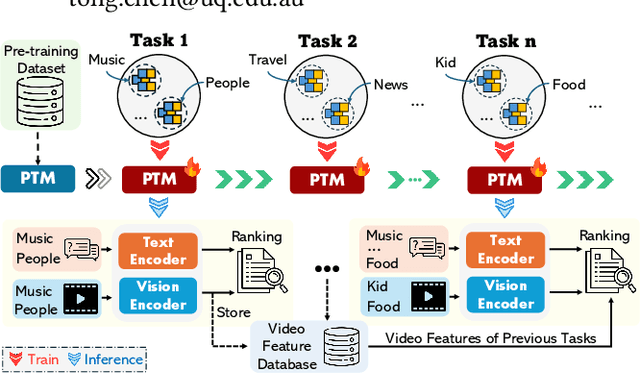
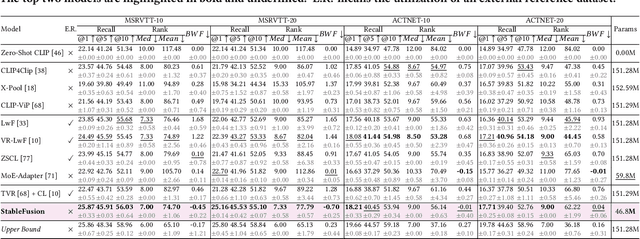
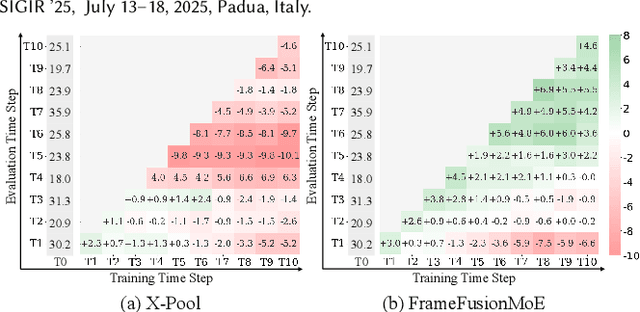
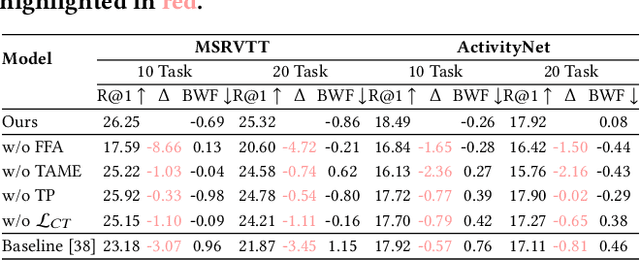
Abstract:Text-to-Video Retrieval (TVR) aims to match videos with corresponding textual queries, yet the continual influx of new video content poses a significant challenge for maintaining system performance over time. In this work, we introduce the first benchmark for Continual Text-to-Video Retrieval (CTVR) to overcome these limitations. Our analysis reveals that current TVR methods based on pre-trained models struggle to retain plasticity when adapting to new tasks, while existing continual learning approaches experience catastrophic forgetting, resulting in semantic misalignment between historical queries and stored video features. To address these challenges, we propose StableFusion, a novel CTVR framework comprising two main components: the Frame Fusion Adapter (FFA), which captures temporal dynamics in video content while preserving model flexibility, and the Task-Aware Mixture-of-Experts (TAME), which maintains consistent semantic alignment between queries across tasks and the stored video features. Comprehensive evaluations on two benchmark datasets under various task settings demonstrate that StableFusion outperforms existing continual learning and TVR methods, achieving superior retrieval performance with minimal degradation on earlier tasks in the context of continuous video streams. Our code is available at: https://github.com/JasonCodeMaker/CTVR
Are Large Language Models Good Data Preprocessors?
Feb 24, 2025



Abstract:High-quality textual training data is essential for the success of multimodal data processing tasks, yet outputs from image captioning models like BLIP and GIT often contain errors and anomalies that are difficult to rectify using rule-based methods. While recent work addressing this issue has predominantly focused on using GPT models for data preprocessing on relatively simple public datasets, there is a need to explore a broader range of Large Language Models (LLMs) and tackle more challenging and diverse datasets. In this study, we investigate the use of multiple LLMs, including LLaMA 3.1 70B, GPT-4 Turbo, and Sonnet 3.5 v2, to refine and clean the textual outputs of BLIP and GIT. We assess the impact of LLM-assisted data cleaning by comparing downstream-task (SemEval 2024 Subtask "Multilabel Persuasion Detection in Memes") models trained on cleaned versus non-cleaned data. While our experimental results show improvements when using LLM-cleaned captions, statistical tests reveal that most of these improvements are not significant. This suggests that while LLMs have the potential to enhance data cleaning and repairing, their effectiveness may be limited depending on the context they are applied to, the complexity of the task, and the level of noise in the text. Our findings highlight the need for further research into the capabilities and limitations of LLMs in data preprocessing pipelines, especially when dealing with challenging datasets, contributing empirical evidence to the ongoing discussion about integrating LLMs into data preprocessing pipelines.
Progressive Generalization Risk Reduction for Data-Efficient Causal Effect Estimation
Nov 18, 2024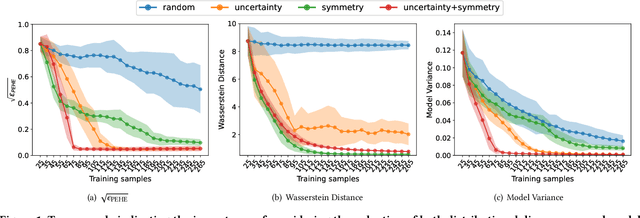

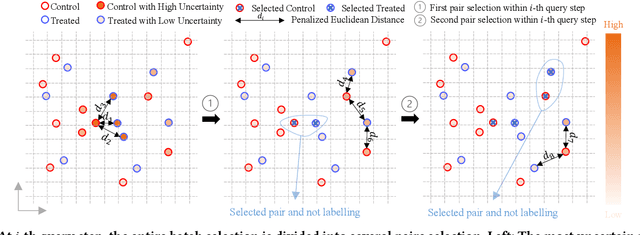

Abstract:Causal effect estimation (CEE) provides a crucial tool for predicting the unobserved counterfactual outcome for an entity. As CEE relaxes the requirement for ``perfect'' counterfactual samples (e.g., patients with identical attributes and only differ in treatments received) that are impractical to obtain and can instead operate on observational data, it is usually used in high-stake domains like medical treatment effect prediction. Nevertheless, in those high-stake domains, gathering a decently sized, fully labelled observational dataset remains challenging due to hurdles associated with costs, ethics, expertise and time needed, etc., of which medical treatment surveys are a typical example. Consequently, if the training dataset is small in scale, low generalization risks can hardly be achieved on any CEE algorithms. Unlike existing CEE methods that assume the constant availability of a dataset with abundant samples, in this paper, we study a more realistic CEE setting where the labelled data samples are scarce at the beginning, while more can be gradually acquired over the course of training -- assuredly under a limited budget considering their expensive nature. Then, the problem naturally comes down to actively selecting the best possible samples to be labelled, e.g., identifying the next subset of patients to conduct the treatment survey. However, acquiring quality data for reducing the CEE risk under limited labelling budgets remains under-explored until now. To fill the gap, we theoretically analyse the generalization risk from an intriguing perspective of progressively shrinking its upper bound, and develop a principled label acquisition pipeline exclusively for CEE tasks. With our analysis, we propose the Model Agnostic Causal Active Learning (MACAL) algorithm for batch-wise label acquisition, which aims to reduce both the CEE model's uncertainty and the post-acquisition ...
 Add to Chrome
Add to Chrome Add to Firefox
Add to Firefox Add to Edge
Add to Edge